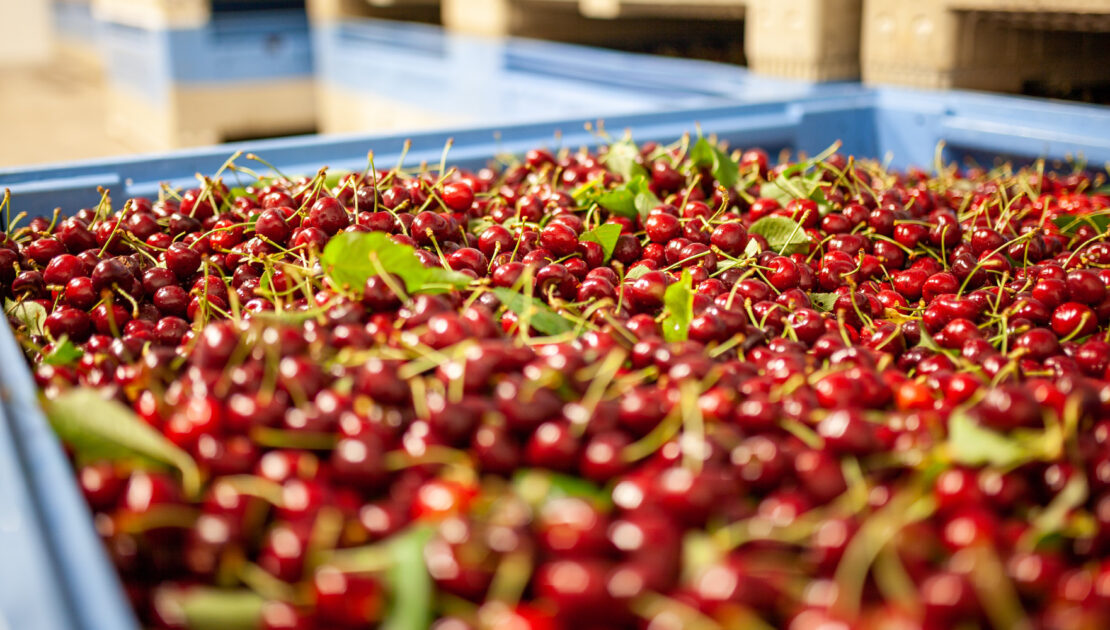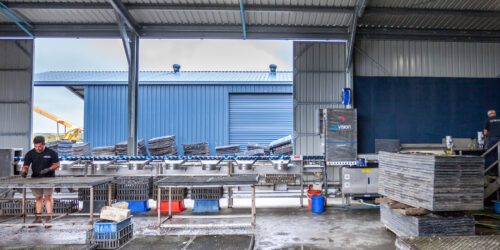We’re proud to partner with so many exceptional agricultural businesses, enhancing the overall productivity and excellence of the fresh produce industry globally.
- 29 March 2023
- gpgraders
- No Comments

Australian Cherry Harvest Season 22-23 Wrap Up
February brings a close to the 2022/23 Australian cherry season and as we clean our machinery, lock our packing sheds, and prepare for the year to come, it’s well worth taking time to look back.
Here are our key reflections on the season that was.
A wet start to the season
Heavy rainfall associated with the El Niña weather pattern proved challenging early in the season. Volumes were down for many. Many growers reported their crops being down around 30% on the forecast. Many early variety cherries also split before they could be picked, which lead to a more intensive picking process where fruit needed to be manually graded by the pickers before bringing it to the packing shed for mechanical grading.
In addition to losing fruit, the boggy ground made maintenance challenging for many, with some orchards losing blocks of trees due to their waterlogged condition.
Thankfully the wet weather wasn’t all doom and gloom, with the season yielding bigger, juicier and more flavoursome fruit.
Varroa mite outbreak threatened pollination
A varroa mite outbreak in NSW provided a challenge for growers in the state and northern Victoria, with some orchards seeking the support of additional pollination services to ensure the success of their crops. Control orders on bees continue to remain in place to stop the spread of infected bees.
Cherries attracted premium pricing
High demand and reduced quantity saw cherries selling for a premium in the domestic market this year. Prices peaked around Christmas, with warmer, drier weather allowing for a greater yield of later fruiting varieties.
Open borders strengthened the workforce
The end of border closures and the return of backpackers looking for orchard work has been positive. In addition to international interest, many orchards have also had ‘grey nomads’ and slow travellers apply to pick fruit.
International demand for cherries grew
Cherry exports account for approximately 25% of the market but almost 40% of the sale value. Process efficiencies (such as using technology like gpVision and multi-lane graders) have allowed local growers to focus on high-quality production and tap into the premium export market.
The increase in cherry growers being export ready increased, with Cherry Growers Australia working towards the ambitious target of exporting 40% of production by 2025. Work will continue in future seasons to maintain, expand, and diversify markets to support the sustainability of the industry.
Whilst the 2022/23 season wasn’t without its challenges, it’s positive to see that the industry and growers are taking steps to make the most of the season. Technology, working with industry bodies and planning for events such as rain and outbreaks helps to lessen the impact of seasonal and agricultural challenges.
If streamlining packing shed operations could help you make the 2023/24 season even more successful, now is the time to get in touch.



